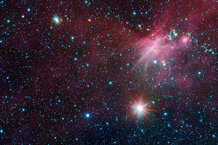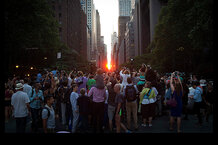Earth isn't nearly as unique as we may think, says new study
Scientists speculate that there are likely 1 billion Earth-sized worlds in the Milky Way galaxy right now, and potential for many more to form throughout the universe.
By Kelsey Warner, Staff October 21, 2015

This is an artist's impression of innumerable Earth-like planets that have yet to be born over the next trillion years in the evolving universe.
Courtesy of G. Bacon/STScI/NASA, ESA
View Caption
The vast majority of habitable planets have yet to be born, according to a new theoretical study.
Researchers culled the data from NASA's Hubble Telescope and the planet-seeking Kepler space observatory and concluded that when our solar system developed 4.6 billion years ago, just eight percent of the planets capable of harboring life had formed in the universe. That means 92 percent of the universe's potentially livable planets are still just dust and gas.
"Our main motivation was understanding the Earth's place in the context of the rest of the universe," said study author Peter Behroozi of the Space Telescope Science Institute (STScI) in Baltimore, Md., in a statement. "Compared to all the planets that will ever form in the universe, the Earth is actually quite early."
Recommended: Could you pass Astronomy 101? Take the quiz!
And, the researchers add, planets will still be forming long after our sun burns out in 6 billion years.
Test your knowledge Could you pass Astronomy 101? Take the quiz!
In Pictures The sun: what a star!
"There is enough remaining material [after the "big bang"] to produce even more planets in the future, in the Milky Way and beyond," added co-investigator Molly Peeples of STScI.
According to Dr. Behroozi and Dr.. Peeples, a benefit of our relatively young planet is getting to witness as the universe takes shape. The Hubble space telescope allowed them to "trace our lineage from the big bang through the early evolution of galaxies," which produced their research.
Based on the survey, the research pair theorizes there are 1 billion Earth-sized worlds in the Milky Way galaxy right now, a sizable portion are assumed to be rocky. That estimate, they say, "skyrockets" when the other 100 billion galaxies in the observable universe are taken into account.
The study's look at what is still to come for planets is worth acknowledging, according to Avi Loeb, a Harvard University astrophysicist and director of the Institute for Theory and Computation at the Harvard-Smithsonian Center for Astrophysics in Cambridge, Mass., in a interview with The Christian Science Monitor earlier this week.
Recommended: On Pinterest?For more on stars and planets, follow the Monitor's Astronomy board!
Most astronomers tend to avoid exploring what their observations mean for the future of the universe, Dr. Loeb says. They stop short of extending their analyses beyond what they can measure of the past and present.
“It's as interesting to think about the future as it is about the past; you learn from it,” he said.
The research concludes there is a preponderance of evidence that supports more Earth-sized planets in habitable zones adjacent to stars that will form in the future. And that future is vast: the last star is expected to burn out 100 trillion years from now.
Earth isn't nearly as unique as we may think, says new study - CSMonitor.com



No comments:
Post a Comment